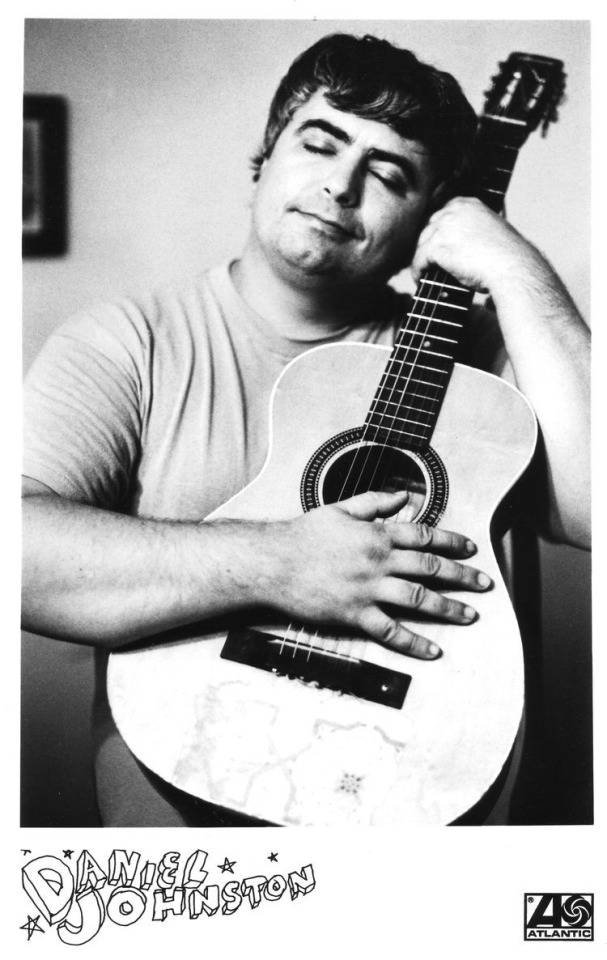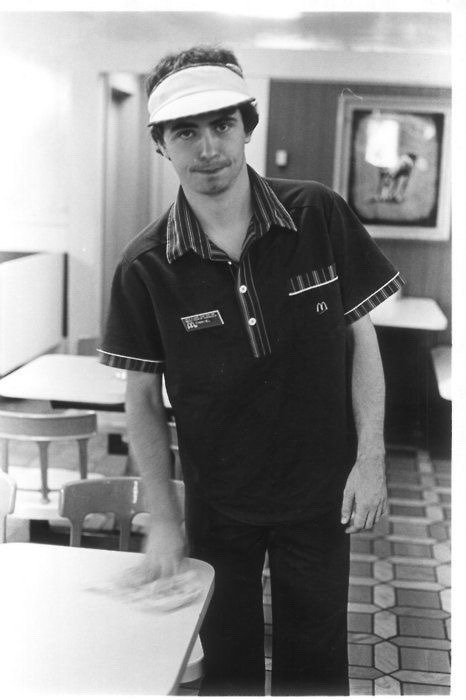Text





Robert Johnston
“You may bury my body down by the highway side. So my old evil spirit can catch a Greyhound bus and ride”.
Born in Hazelhurst, Mississippi on May 8th 1911, Robert Johnson in his only 27 years of life would only record 29 songs but the impact and influence of these songs is heard throughout many genres of music to this day.
Little is known about Johnson’s formative years, his step father was driven out of Hazelhurst by a white Lynchmob after a land dispute. He lived with his mother for some time on a plantation, but moved often across Mississippi, Arkansas and Tennessee. When he was 18 Johnson would marry 16 year old Virginia Travis who would die whilst giving birth to their child. This, and a number of other events lent credence to the story that Johnson had sold his soul to the devil in order to perform music. The story goes that Johnson took his guitar down to the crossroads of Highway 49 and 61 in Clarksdale, Mississippi where the devil took the instrument and returned it to Johnson in exchange for his soul.
Johnson’s began taking his music more seriously, playing in bars, juke joints and street corners throughout the Mississippi Delta. His music career was growing but his personal life was still marred by trauma; he again lost a wife to childbirth in 1932 causing Johnson to leave his home and becoming a wandering musician. Although the legend of Johnson was spreading in the Blues music community he was described as “a nice guy, fairly average - except, of course his musical talent, his weakness for whiskey and women, and commitment to the road”.
November of 1936 Johnson was in San Antonio and had his first of only 2 recording sessions. During these sessions it was said that Johnson would record all his songs facing the corner of the room away from people. A few reasons have been for why he did this; it was indicative of his shy nature, it improved his sound, or possibly darker motives.
Johnson would die two years later in Greenwood, Mississippi but reflecting the tragedy experienced through a lot of his life Johnson’s death would not be made public record until 30 years later when Blues researchers found his death certificate. Little is known about his death but he was found at the side of a road near a farm, and being a black man in 1930’s Mississippi an autopsy wasn’t performed. There are many rumours surrounding Johnson’s death the most popular being that whilst playing in Greenwood Johnson had flirted with someone’s wife, in revenge he would poison Johnson’s whiskey. He was buried by the plantation owners, in which he was staying, in a home made coffin in an unmarked grave - which is yet to be found.
Although Johnson never found fame in life, 30 years after his death and with the population of vinyl records and blues music Johnson’s music saw a revival. His impact on music is numerous but bands like Led Zeppelin, Black Sabbath and The Rolling Stones all cite Johnson as a major influence on their early music. These bands would go on to define Rock and Metal and Johnson’s legacy would live on.
3 notes
·
View notes
Text





Daniel Johnston
“Most of the worst things said about me, I’ve said myself”
Although exploding through the Austin Alternative scene, Daniel Johnston was originally born in Sacramento, California and grew up in West Virginia. Johnston began exploring his creativity through making art, drawing comics and recording home movies of his friends and family, often at their expense. In his late teens Johnston began experimenting with music, utilising the home piano and a chord organ the family owned.
Johnston joined an art program at Kent State University where he would fall in love with one of his fellow students, Laurie Allen. She would go on to be Johnston’s muse and the motivation for a great deal of his music. Although the relationship was doomed from the start, Laurie was already in a relationship with a soon to be Mortician, Johnston said of Laurie; “I was alone in my life with little to live for, trying my hand at art thinking that maybe I could save myself and in my desperation all my hope would fly away until there was nothing left of me, nothing left to say. And in this nightmare there was a dream of a girl so beautiful beyond compare, the girl of my dreams. So wonderful, so beautiful, so many songs; Laurie”. He would go on to make the albums Songs of Pain and More Songs of Pain off the back of his heartbreak and move to Austin, Texas to pursue his music career.
His arrival in Austin was as eventful as much of his time there, and in hindsight may have been slightly prophetic. Johnston had run away from his sisters house to join the circus, he toured with them for some time before landing in Austin. During a break in a portable toilet one of his less patient carnival colleagues banged on the door until Johnston open it, when he did he was punched in the face leaving him dazed and confused. Johnston wandered the streets of Austin until he found a church to seek refuge in, his parents were fundamental Christians and although Johnston had rebelled against some aspects of their faith he still held a deep belief in God. The Church got Johnston back on his feet, in more than one way, and he began his life in Austin. He landed a job at McDonalds and continued to work their through the first years of his career, often being interviewed for magazines and radio stations at his workplace. Johnston would continue to record and put out music through this period, including his two most well known projects; Yip/Jump Music and Hi, How Are You?
Although Austin and it’s music scene provided Johnston with respect, a certain level of fame and some money in his pocket it began becoming a detriment to his mental health. Johnston began becoming increasingly paranoid, he would see the number 6 every where which he called the devils number. Audio and visual hallucinations also began warping his view of the world and despite various medications and treatments Johnston would often cease them when it came time to record music or play live as he felt they clouded his creativity. His descent into mental breakdown culminated in his removing of his clothes and splashing himself in the river outside the University of Austin, his father owned his own airplane and flew to Austin to collect his son. On the flight back while reading a Casper comic about the ghost parachuting, Johnston decided mid-flight to take the keys to the plane and throw them out the window. Fortunately his father was able to level the plane before crash landing into treetops, both walking away mostly unharmed. Johnston was hospitalised in a mental institution as a result.
During his institutionalisation Johnston’s fame grew exponentially. His music was being shared throughout the growing alternative scene of the late 80’s/early 90’s. Musicians like Sonic Youth and Half Japanese began championing Johnston and reached out to his manager to work with the troubled artist. Kurt Cobain would famously wear Johnston’s Hi, How Are You? T-shirt in multiple interviews, with people wanting to know who the guy was from the shirt. Although Johnston would continue to make music and produce art, his mental health illness and his occasional refusal of treatment always came between Johnston truly breaking out. He would spend his later years living with his parents up until their death, his music and art still garnering world wide acclaim until his death in 2019 from a heart attack.
Daniel Johnston is reminiscent of tortured artists like Van Gogh and Dali, whose mental illness and creative output are so seemingly intertwined that you wonder if you took away the illness would the output still be as influential?
3 notes
·
View notes
Text





Varg Vikernes
One of the most controversial figures in modern music; Varg Vikernes, most notably the only member of the black metal band Burzum. Originally born Kristian, a name that will hold some irony in the future, Varg spent much of his youth in Bergen, Norway. Burzum was formed in the early 90’s when Varg was in his early 20’s and produced 5 albums before, in August of 1993, Varg fatally stabbed fellow black metal musician Øystein Aarseth, also known as Euronymous. Meanwhile Varg was further charged with several infamous church burnings linked to the black metal scene in Norway. He would spend 15 years in prison for these crimes before his release in 2009 and relocation to France with his wife and children.
His views and outspoken beliefs have furthered his controversy and has been known as “the most hated man in Norway”. His extreme views would peak during his prison stay where he would form the Norwegian Heathen Front, a neo nazi organisation but Varg’s extremism predated his incarceration. During the early 90s when Norway was experiencing several burnings of iconic churches across the country, Varg is alleged to have motivated a group of musicians to commit the crimes. Although they have often been linked to satanism Varg would argue that it was less about Satan and more a reaction to what he saw as the Christian plague that had spread across Europe during ‘The Enlightenment’ , his beliefs the Christianity destroyed the pagan Neolithic culture of Scandinavian.
Since his release from prison, and during his stay, he has continued to make music under the Burzum name but moved from the traditional guitar driven Black Metal sound to more ambient keyboard based projects. Initially this was due to unavailability of other instruments in prison but has since continued to make similar music. Varg’s views are still extreme, with his blog Thulean Perspective being shut down or accused of anti-semitism or racial hatred.
IMO one of the interesting things in artists like this is our ability to remove the individual to the art they create. Can you enjoy the music of Burzum if your own ideals are in stark contrast to Varg’s?
4 notes
·
View notes